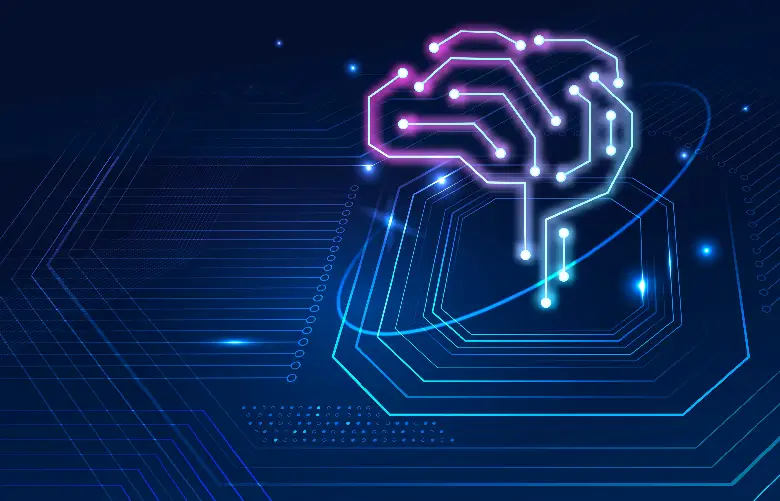A neural network is a process in AI that teaches machines to process data in such a way that human brains do. This machine learning method is also known as deep learning. What it does is use interconnected neurons or nodes in the layered structure that resembles human brains. Here’s more to learn about Artificial Intelligence and Machine Learning.
Definition of a Neural Network
So, what is a neural network? A neural network or ANN creates an adaptive system used by computers to improve and learn from their mistakes. ANN intends to solve complicated issues such as identifying faces and summarizing documents with utmost accuracy.
ANNs consist of node layers that contain an input layer, an output layer, and hidden layers. Every node connects to another and consists of associated thresholds and weight. If any node’s output is above the specific threshold value, it is activated and can send data to the following layer of the network.

POSTGRADUATE PROGRAM IN
Data Science & AIML
Learn Data Science, AI & ML to turn raw data into powerful, predictive insights.
Importance of Neural Networks in Machine Learning and Artificial Intelligence
ANNs can assist computers in making smart decisions with limited human assistance. They can learn as well as model relationships between output and input data, which are complex and nonlinear.
The Basics of Neural Networks
Want to learn the fundamentals of ANNs? Here’s a list to explore:
- Neuron: It’s the building block that takes weighted values, does the mathematical calculation, and produce output
- Input: it’s the value or data passed to neurons
- Deep Neural Network: DNN has multiple hidden layers
- Weights: It explains a connection’s strength between the neurons
- Bias: It’s a constant value added to a sum of any product between the input values as well as respective weights
- Activation function: Lastly, it’s the function used for introducing a non-linearity phenomenon into a NN system
Anatomy of a Neuron
NOTE: Use similar infographic, do not use this one

The neural network in machine learning comprises output and input layers. In a majority of cases, it also consists of a hidden layer that contains units to transform an input into something the output layer uses.

82.9%
of professionals don't believe their degree can help them get ahead at work.
Types of Neural Networks
Here’s a list of the neural network type:
- Feed-Forward Neural Networks: This simple type of neural network conveys information in a single direction via the input nodes.
- Recurrent Neural Networks: It is a complex type of neural network and takes the processing node’s output to transmit information into the network
- Convolutional NN: Also termed CNN, the convolutional neural network has different layers where data is sorted into categories. Such networks have an input layer and multiple hidden convolutional layers in between
- Deconvolutional Neural Networks: It helps detect items that are recognized as important under the convolution NN
- Modular Neural Networks: It contains different networks working independently from each other. Their process is done to allow complex computing processes.
Key Components of a Neural Network
There are three components in any neural network in machine learning, which are mentioned in the following:
- An input layer that has units representing input fields
- One or more than one hidden layers
- An output layer with the unit(s) that represent a target field(s)
These units are connected with fluctuating connection strengths (or weights). Let’s look at the neural network components in detail.
| Component | Description |
|---|---|
| Input Layer | The first layer of a neural network that receives input data. It consists of neurons that represent the features or variables of the input. |
| Hidden Layers | Intermediate layers between the input and output layers. They perform computations on the input data through a series of weighted connections. Multiple hidden layers allow for deeper learning and feature extraction. |
| Output Layer | The final layer of a neural network that produces the output or prediction. The number of neurons in this layer depends on the type of problem being solved (e.g., classification, regression). |
| Neurons | Basic processing units in a neural network. Neurons receive inputs, apply an activation function to produce an output, and pass the output to the next layer. |
| Weights | Parameters associated with connections between neurons. Weights determine the strength and importance of the inputs in computing the output of a neuron. They are adjusted during the training process. |
| Activation Function | Non-linear functions applied to the weighted sum of inputs of a neuron. Activation functions introduce non-linearity, allowing neural networks to learn complex relationships and make non-linear predictions. Common activation functions include sigmoid, ReLU, and tanh. |
| Bias | Additional constant term added to the weighted sum of inputs in a neuron. The bias helps shift the activation function and adjust the output of a neuron. |
| Loss Function | A measure of the error or discrepancy between predicted and actual outputs. The loss function quantifies the network’s performance and guides the training process by optimizing the network’s weights. Common loss functions include mean squared error (MSE), categorical cross-entropy, and binary cross-entropy. |
| Optimization Algorithm | Algorithms used to adjust the weights of a neural network during training to minimize the loss function. Popular optimization algorithms include gradient descent, stochastic gradient descent (SGD), and Adam. |
| Learning Rate | A hyperparameter that controls the step size at which the weights are updated during training. The learning rate affects the speed and convergence of the optimization process. |
| Backpropagation | A technique used to train neural networks by propagating the error backward from the output layer to the input layer. It computes the gradients of the loss function with respect to the network’s weights, which are then used to update the weights through the optimization algorithm. |
Training a Neural Network
Note that a majority of DNNs are feed-forward. This means that they flow in a single direction only – starting from the input. But you can train the model via backpropagation. In short, backpropagation is the common training algorithm that makes gradient descent feasible for any multi-layer NN.
Neural Network Architectures
The only inspiration behind the neural network architecture is the human brain. Neurons, which are human brains, form an interconnected and complex network. They send electrical signals to different parts of the body.
On that same note, an ANN consists of artificial neurons working together to solve any issue. ANNs are the software modules known as nodes. They use computing systems to solve any mathematical calculation. Want to discover what are the differences between machine learning and deep learning? Click on the link.
Feed-forward Neural Networks
The feed-forward neural network in machine learning is a type of ANN that process data in a single direction from the input to the output node. Each node in a layer is connected to the next node in the following layer. It uses feedback processes that improve predictions with time.
Convolutional Neural Networks
Hidden layers in these neural networks perform specified mathematical functions such as filtering or summarizing. In short, it is called convolutions. They are valuable for image classification as they extract appropriate features from useful images for image classification and recognition.
Recurrent Neural Networks
The recurrent neural network in machine learning is a form of ANN used in natural language processing and speech recognition. This type of ANN can identify sequential data traits and utilize patterns for anticipating certain scenarios.
Deep Neural Networks
DNN, or deep neural network in machine learning, is another type of artificial neural network. In this type of ANN, there are multiple layers between the output as well as input layers. Various types of neural networks are there but comprise the same components, including synapses, neurons, biases, functions, and weights.
Examples of Neural Networks in Action
Three examples of NNs include the following:
- Convolutional neural networks or CNNs for image recognition as well as classification
- Recurrent neural networks or RNNs for sequence prediction and natural language processing
- Generative adversarial networks or GANs for generating realistic images as well as data
Image Recognition and Classification
The neural network in machine learning can be used for solving different problems. One of them is image recognition. Neural networks are trained to recognize objects in digital images. So, it can be used in search engines, security, etc.
Natural Language Processing and Speech Recognition
Deep neural networks can also identify speech. Deep learning models are trained using specified algorithms and techniques, specifically FFNN or Deep Feed-Forward NN (FFNN), RNN or Deep Recurrent NN, as well as LSTM. The input data might be audio & output will be the text transcript.
Advantages and Disadvantages of Neural Networks
Neural networks in machine learning have several advantages:
- Since NNs learn from data, they can solve complex problems effectively
- They recognize patterns in data, unlike traditional AI algorithms
- They can perform several tasks, such as natural language processing and image recognition
- They possess massive amounts of data
But neural networks also have downfalls:
- They are complex and need massive data to get trained
- Extremely time-consuming and expensive
- Learn patterns in data that aren’t present actually, so they are prone to overfitting
- As they learn patterns in data that are not present actually, it can lead to inaccurate results
- They aren’t interpretable, so understanding why they made a particular decision becomes difficult.
Benefits of Neural Networks in Machine Learning and Artificial Intelligence
Neural networks for ML and AI can solve complex problems and identify patterns in data. Besides, they also perform tasks, such as natural language processing and image recognition.

Challenges and Limitations of Neural Networks
There are certain limitations of neural networks. The networks can resolve complicated problems such as the following:
- Natural language processing
- Computer vision
- Speech recognition
But there are certain limitations and challenges, as mentioned in the following:
- Problems with generalizing or transferring knowledge and skills to a different task or domain
- Lack of security and robustness
- Lack of explainability and interpretability
- More amount of data & computational resources are required to improve the functionality
Ethical and Social Implications of Neural Networks
The ethics and social implications of neural networks are challenging to predict. ANN is a powerful tool that may be misused on the path to any righteous objective. AI credit evaluation systems for making loans accessible may do just the opposite with the wrong training.
Or targeted ad systems that can meet more consumer demands may not work effectively. As ML is integrated into the pragmatic lives of people these days, it becomes more significant to think of leveraging powerful tools in the most effective ways.
Conclusion
So, you have learned everything about neural networks in machine learning, their examples, applications, and even limitations.
What is an Example of a Neural Network?
What is the Neural Network and its Application?
What is the Difference Between AI and Neural Networks?
What are the Benefits of Neural Networks?
Updated on March 28, 2024
